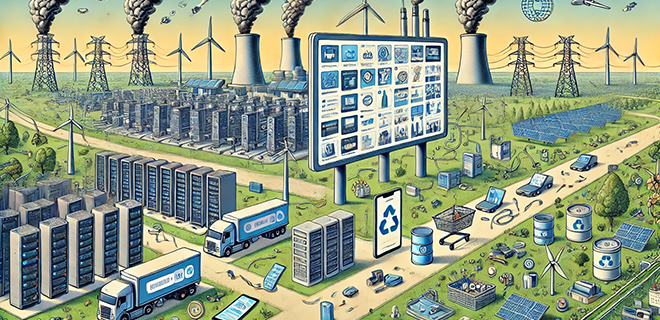
Jon Schulz, CMO of Viant Technology, shares how his journey from IT to marketing shaped his leadership in ad tech and why sustainability in digital advertising is a crucial yet overlooked challenge.
Fresh out of college as a computer science student, Jon Schulz knew that he wanted to be a marketer, and from day one of his 12-year stint at Ford, he did just that. Throughout his career ups and downs, Jon strategically navigated climbing up the corporate ladder to achieve career success.
Fast-forward and Jon is now CMO at Viant Technology, a role he never expected to hold for 16 years. A background in information technology made the transition into ad tech smoother than expected, especially now with advertising completely reliant on technology.
“It translated pretty well because it was pre-internet when I got all my training. So I took classes like DOS, D-Base, and Qobuz, which are archaic today. But coding languages tend to be pretty consistent,” Jon explained.
Nowadays, he’s shifted his focus to sustainability. While some question whether digital advertising has a real environmental impact, the data says otherwise. Digital ads are an invisible yet significant polluter. The advertising industry accounts for 3.5% of global carbon emissions, a percentage destined to climb without changes.
Digital Ads Pack the Carbon Punch of Thousands of Global Flights
Yes, you read that right. Although that ~3.5% sounds small, there is more than meets the eye. When it comes to factories, airlines, and all other aspects that produce carbon, the waste digital advertising produces is not traditional. It’s like seeing a car driving down the road and emitting harmful fumes. It can be hard to understand.
Ad tech uses a lot of electricity, and much of that energy is fossil fuel-driven.
“Everything’s shifting to digital, and digital requires electricity,” Jon explained. “That’s where the carbon comes from. The evolution of AI is even hungrier for processing and computing. It uses even more electricity.”
A recent report by The Times entitled “Making AI Less Thirsty” reveals that the latest Big Tech sustainability reports show double-digit increases in water consumption by Google (17 percent), Microsoft (22.5 percent), and Meta (17 percent). What’s worse? ChatGPT and other Gen AI platforms need four times more water to respond to queries than previously presumed. You may be wondering how AI and water are connected, but the water is used to cool down the data centers. This demand is growing as AI is only getting more advanced.
The environmental impact extends far beyond electricity. Production costs associated with the many events and conferences we attend also contribute to the carbon footprint. Giveaways also have an effect.
“I was at a Detroit Lions game where they handed out electric wristbands to the crowd,” Jon says. “By the end, about 60,000 were discarded on the ground. That’s a lot of unnecessary waste.”
Signage and creative also play key roles in stifling sustainability. Production, travel, and logistics for advertising campaigns also contribute to the waste. “Every time we shoot an ad, whether in LA or Poland, the travel and resources add up,” Jon points out. “We can’t erase it overnight, but we can start being more mindful.”
The Road Ahead: Balancing Profit and Planet
Very few companies are acting on sustainability efforts, despite widespread interest. According to Viant research, 70% of advertisers express interest in sustainability, but only 10% take real steps to implement changes. Viant’s Adtricity initiative aims to shift this by rewarding advertisers with renewable energy credits for every dollar spent, helping decarbonize the entire programmatic supply chain.
“Green inventory is already a reality,” Jon explains. “Publishers have started adopting carbon-free practices, and we’re empowering the industry to make more sustainable choices.”
While many companies are eager to adopt sustainability practices, the challenge lies in maintaining them when revenue metrics start to dip. “The real test comes when sustainability efforts impact the bottom line,” shares Jon. “Will companies stick with it?”
There may never be a perfect solution, but the industry is moving in the right direction. The push for greener practices in ad tech is just beginning, and while it may be a slow process, progress is being made.
“We can’t change everything overnight, but small, conscious steps will drive us toward a more sustainable future,” Jon explains.